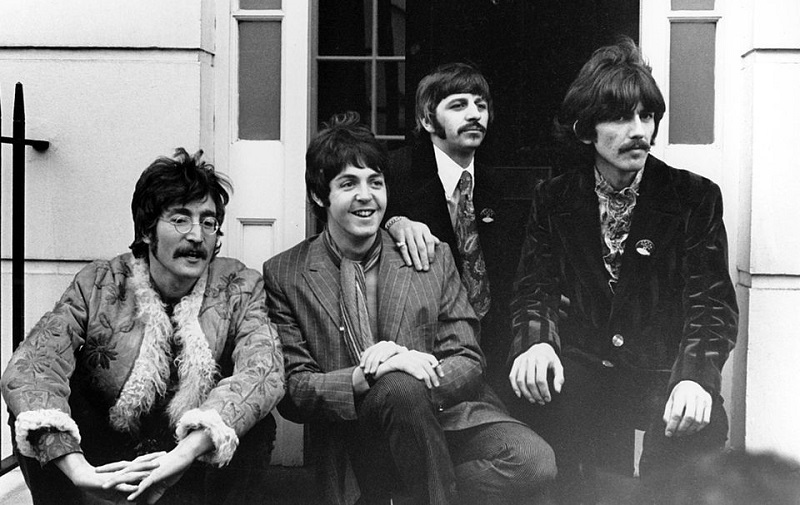With all the turbulence rattling The Beatles by the late ’60s, it’s a small miracle the band lasted (sort of) until 1970. By then, it had been years since the Fab Four quit touring and a good while since they enjoyed the company of one another in the recording studio.
If you read about the recording session for “Come Together,” John Lennon’s biggest hit with The Beatles, you can feel the sadness of Paul McCartney as he describes the date. (Paul wanted to sing backing vocals but felt stupid asking John.)
In this type of situation, the best the four great musicians could do was go out and make careers for themselves. As every fan of their music knows, that’s exactly what they did. And, being who they were, each landed a No. 1 single on the Billboard charts within four years.
Being the people they were, it almost meant there was a competition to be the first to top the charts. “The quiet Beatle” ended up being the one to make it there first.
George beat everyone to the punch with 1970’s ‘My Sweet Lord.’
On Abbey Road, The Beatles’ final studio album, George Harrison did some of his greatest work to that point. His tunes “Something” and “Here Comes the Sun” seemed to capture the group’s timeless sound, but they were Harrison songs all the way.
When he release the triple-album All Things Must Pass in November of ’70, McCartney’s first album had been on the market for seven months. Lennon and Ringo Starr also had records out. But none had topped the charts with a hit single yet.
Harrison became the first when “My Sweet Lord” reached No. 1 in December. It didn’t really sound like a Beatles song.
Unfortunately for George, it did sound a little too much like 1963’s “He’s So Fine” by The Chiffons. Later, he ended up paying hundreds of thousands in damages to the song’s publisher following a copyright infringement case.
McCartney would be the next to hit No. 1 with a solo track, when he made it there with “Uncle Albert/Admiral Halsey” in September 1971. Ringo Starr, who hadn’t been much of a singer or songwriter during the Beatles days, followed Paul with “Photograph” reaching No. 1 in November 1973.
John would the last to top the charts with his 1974 track with Elton John.
By 1974, only Lennon hadn’t made No. 1 on the Billboard Hot 100 charts. It wasn’t for a lack of great songs, though. Under normal circumstances, 1970’s “Instant Karma” and 1971’s “Imagine” would have both made it. (They both peaked at No. 3, though the album Imagine reached No. 1.)
It took until November of ’74, when Lennon’s Plastic Ono Nuclear Band topped the charts with “Whatever Gets You Thru the Night,” which featured Elton John. (Listening to it now, it sounds like it could be the theme to Saturday Night Live.)
Lennon wouldn’t see another No. 1 single again in his lifetime. His second and final chart-topping hit made it there weeks after his murder. For his part, McCartney scored several more No. 1 hits in the ’70s. (Harrison and Starr also repeated the feat.)
Sure, The Beatles broke up in 1970, but nothing stopped these four from making great music on their own. Ringo and Paul, the two surviving members, are still at it.



